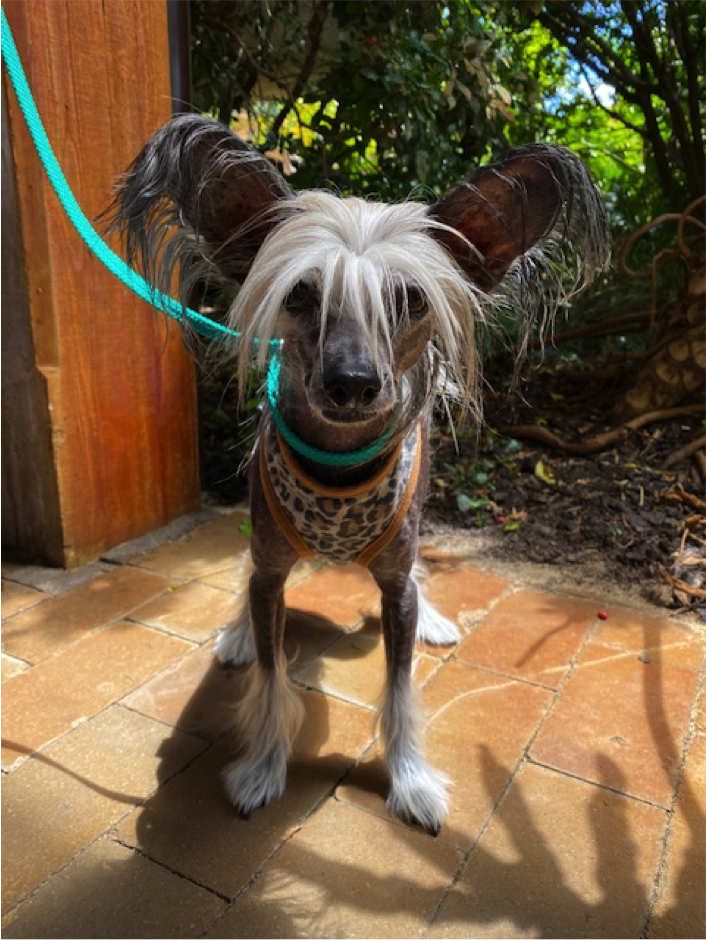Bee & Wasp testing for Billie
Name: Billie McCabe | Age: 8 Years Old | Breed: Chinese Crested
History: Billie, an 8 year old Chinese crested male dog presented to the Animal Dermatology Clinic for bee and wasp testing. Billie suffered two episodes of anaphylactoid reactions with acute collapse; urticaria, vomiting and hypersalivation after confirmed bee envenomation.
Test Procedure: Billie underwent intradermal bee and wasp venom testing under deep sedation performed by a specialist anaesthetist. During the procedure his heart rate, respiratory rate, blood pressure, capillary refill and temperature were closely monitored. The test procedure, performed by a specialist dermatologist, involves injecting increasing concentrations of bee and wasp venom intradermally until a positive reaction is observed. This confirms the diagnosis of a bee or wasp allergy.
Diagnosis: Bee venom hypersensitivity
Venom Hypersensitivities: Hymenoptera insects (bees and wasps) can cause hypersensitivity reactions in dogs and cats. In rare cases they can trigger life- threatening anaphylactic reactions in sensitised individuals as a result of immediate hypersensitivity reactions occurring within 10 minutes of the sting. The primary immunologic mechanisms involve a type I hypersensitivity and the presence of immunoglobulin (IgE) against a previously encountered allergen. IgE binds to the surface of mast cells and basophils causing degranulation and subsequent histamine release. This may result in a mild local reaction (erythema, pruritus and inflammation) or a systemic anaphylactic reaction (vasodilation, smooth muscle contraction and shock.)
Treatment: Billie will begin the induction phase of the bee desensitisation process. This involves injecting increasing concentrations of bee venom subcutaneously once a week over 19 weeks. An intravenous catheter and monitoring is performed before and after administering the venom. Billie will then enter the maintenance phase of desensitisation, and he will receive lifelong immunotherapy.
Prevention: Other ways to reduce the chance of a bee sting include avoidance, ie keeping sensitised individuals indoors and using effective insect repellents. Prompt recognition and initiation of treatment is critical in successful management of anaphylactic reactions to Hymenoptera stings. Treatment of uncomplicated cases include antihistamines, cool compresses and topical glucocorticoids.


